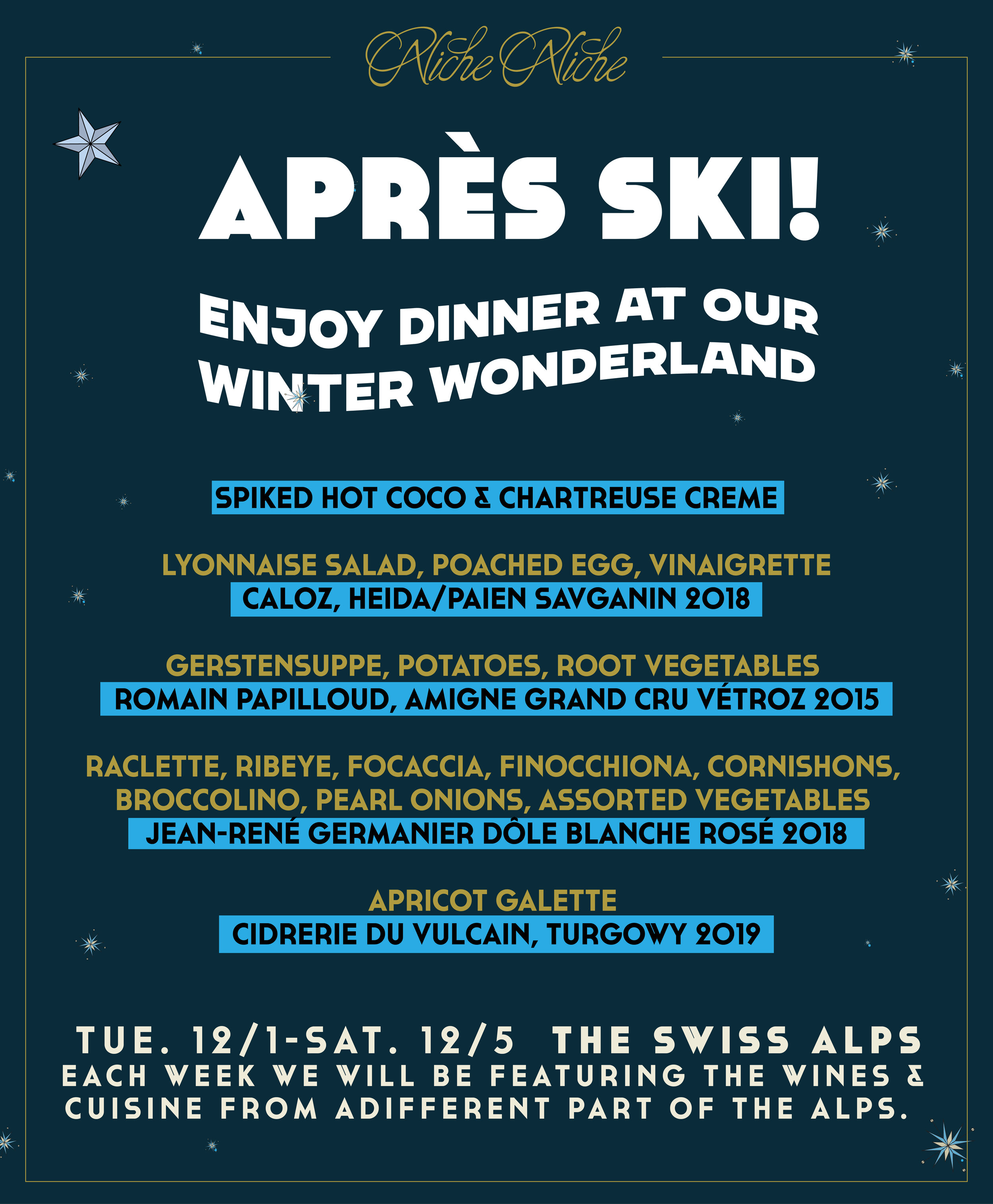SWISS ALPS APRES SKI À LA NICHE NICHE
The Wines…
CIDRERIE DU VULCAIN BRUTE BESTIALE
Jacques Perritaz of Cidrerie du Vulcain in Le Mouret, Switzerland planted an orchard, but for now all his ciders are produced from the fruit of foraged trees, in the sense that they grow isolated or in small groups. He must find their owners and secure an agreement to buy the picked fruit or harvest it himself. There is now a solid base of tree owners with whom Jacques has an ongoing agreement, while for others - it depends on their mood.
All in all, Jacques processes the fruit of 150 to 200 trees every year. Because there are so many owners, he cannot get organic certification, but all the trees are untreated. They are also all grown haute-tige, literally ‘high branches’, which was the traditional method used when the trees grew in pastures as part of an ecosystem, rather than in dedicated large orchards. With haute-tige, the branches start high enough from the ground so that cattle can graze under the trees or use them for shade, but not eat their fruit unless it has fallen.
Varieties: Tobiässlerand Thurgauer Weinapfel
Terroir: Mountainous Swiss canton of Thurgau
Agriculture: Older, untreated, high-branched trees
Cider-making: Crushed, light maceration (2-72 hrs) before pressing, light settling and clarification (with natural mushroom extract) before partial indigenous yeast fermentation in stainless steel tanks. Two to three light filtrations ensure that the desired residual sugar levels are attained. Natural prise de mousse in bottle. No sulfur added.
Cave Caloz Heida-Paien "Les Bernunes" Valais 2018
100% Savagnin
The Caloz family established their domaine in 1960, setting up their home and cellar in the village of Miege which sits midway between the town of Sierre, at the southern end of the Valais, and the famous ski area of Crans-Montana. Fernand Caloz, father of the current proprietaire, Sandrine Caloz, began the arduous process of tending the vines in this mountainous region where the vineyards sit on steep terraces and must be worked by hand. This version of the famous Savagnin (the grape in the Jura responsible for the great Chateau Chalon and the full range of Vin Jaunes) does not share the oxidative notes of its cousin from the Jura. Rather, it is a dry wine with tantalizing aromas that capture the smell of the mountain herbs, the pine forest and the crisp Alpine air. A shy-bearing vine that matures late, the Heida-Paien requires a patient and talented vigneron to display its complex character. The “Les Bernunes” vineyard is recognized for its capacity to produce this grape variety at its best.
Romain Papilloud Amigne de Vétroz 2015
(1 Bee)
Romain took the reins from his parents Odette and Leon in 1986, marking the domaine’s third generation of stewardship under the Papilloud name. Aided by his wife, Gladys, and Vincent, their son, Romain cultivates four hectares of vines, with the majority located in Vétroz, supplemented with smaller holdings in the neighboring villages of Conthey and Ardon, all centered in the heart of the Valais. The steep slopes of the vineyards require intense manual labor throughout the growing season and through the harvest, which fits in nicely with the minimal-intervention approach to the entire production at the estate.
Amigne is an ancient Swiss variety, likely brought to the Valais by the Romans, and now grown almost entirely in the town of Vétroz. Recent DNA testing reveals Amigne is closely related to the obscure Champagne variety petit meslier, which squares amigne within the family of gouais blanc, a parent variety of chardonnay. Amigne is noted to produce great wines at varying sweetness levels, which until 2005 had no legal labeling distinction. Now one can find Amigne de Vétroz marked by bees on its label to indicate general residual sugar levels. 1 bee marks a dry wine, while 3 bees marks a wine that is notably sweet.
Region: Valais
Appellation: Vétroz
Soil: Glacial moraine, slate
Farming Practice: Organic
Vinification: Stainless steel
Elevage: 5-8 months stainless steel
This estate is one of the oldest Swiss wineries founded in 1886. Urbain Germanier harvested his first vintage in 1896 at Balavaud (a hamlet in the commune of Vértroz) and devoted his life to his vineyards. His three sons, Francis, Paul and Charles later took over and the winery is now in its 3rd generation under the direction of Jean-René Germanier and his nephew Gilles Besse.
Jean-René Germanier 2018 Dôle Blanche "Balavaud"
This estate is one of the oldest Swiss wineries founded in 1886. Urbain Germanier harvested his first vintage in 1896 at Balavaud (a hamlet in the commune of Vértroz) and devoted his life to his vineyards. His three sons, Francis, Paul and Charles later took over and the winery is now in its 3rd generation under the direction of Jean-René Germanier and his nephew Gilles Besse.
This peony-colored wine is a blend of gamay and pinot noir grapes from the Balavaud vineyard. It spent only a few hours macerating before it was pressed off its red skins, and fermented (and aged) in stainless steel. The gamay's fruitiness, coupled with the pinot noir's finesse, make for a fresh and layered rosé.
Variety: Gamay, Pinot Noir
Region: Valais
Appellation: Vétroz
Vineyard: Balavaud
Soil: Alluvial deposit, moraine sediment
Farming Practice: Sustainable
Vinification: Stainless steel
Elevage: 10 months stainless steel












